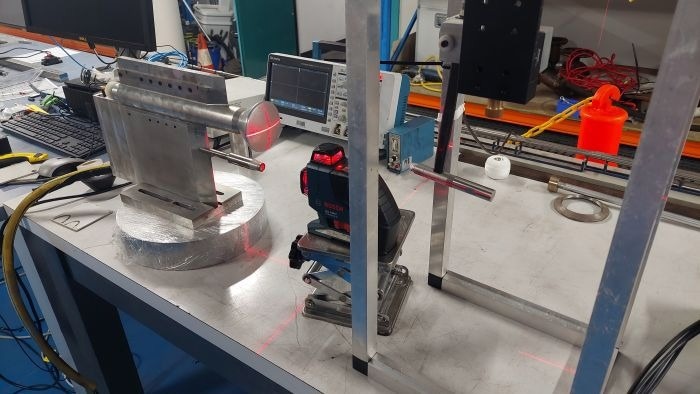Magnetic heat shields could increase the viability of future return missions to Mars by making spacecraft lighter, cheaper, and cooler during re-entry.

Image Credit: The University of Queensland
UQ hypersonics researcher Dr David Gildfind and his team at the School of Mechanical and Mining Engineering are conducting the world’s first experiments to determine how spacecraft size affects magnetic heat shield performance.
Heat shields are used to protect spacecraft from the intense fireball that forms when re-entering Earth’s atmosphere, where speeds in excess of 30,000 km/hr cause the air around the vehicle to become so hot it turns to plasma.
Dr Gildfind said his work was focused on actively deflecting this super-hot plasma with superconducting magnets, instead of just relying on conventional thermal protection such as the ceramic tiles that were used on NASA’s space shuttles.
“When the magnet pushes at the plasma, the plasma pushes back on the spacecraft, helping to slow the spacecraft down,” Dr Gildfind said.
“The idea with this is it gives you extra braking earlier on to help slow the spacecraft down before the fireball reaches peak intensity and g-forces become intolerable.
“And by reducing temperatures on the surface of the spacecraft, the vehicle’s thermal protection system can be made lighter without compromising safety during its fiery ride back into Earth’s atmosphere.”
World-First Experiments
An ARC Discovery Grant has allowed Dr Gildfind and other UQ hypersonics researchers to join international efforts to research magnetohydrodynamic heat shield technology.
UQ’s Centre for Hypersonics is already recognized as the world’s leading university-based research group for hypersonics, defined as speeds greater than Mach 5, or 5 times the speed of sound.
Two decades ago, the Center gained international attention for conducting the first atmospheric SCRAMjet test.
Dr Gildfind and his team will build on that history of innovation by conducting world-first experiments in their hypersonics laboratory to measure how a magnetic field deforms due to the flow of plasma through the field.
“We will put the theory into practice for what would be the ultimate application for this technology - a large, crewed capsule returning to Earth from Mars, such as a future version of NASA’s current Orion capsule,” Dr Gildfind said.
“Until now there has been very limited research as to how a magnetic field deforms when plasma flows through it during flight at these speeds, even though we expect the effect to be significant. We hope to change that and forge a path forward for this technology to make spaceflight safer and cheaper.”
Uncharted Territory
However, Dr Gildfind said it was not yet known how the technology will perform at the scale required for human space travel.
“The truth is, this is uncharted territory in the field of spacecraft design. The physics involved in using strong magnetic fields to manipulate the fireball engulfing a large spacecraft is incredibly complex, and while our models and analysis predict big gains in performance, no one can know for sure until we do experiments.”
Dr Gildfind said the findings of the research, supported by the $610,710 ARC grant, will be shared with international space agencies as part of an effort to boost collaboration and help Australia’s growing space industry continue to take flight.
“Support for research such as this also encourages more young Australians to pursue careers in science, engineering and mathematics,” Dr Gildfind said.
Early findings from the research have recently been presented at The 35th International Symposium on Shock Waves at The University of Queensland on 5-14 July.